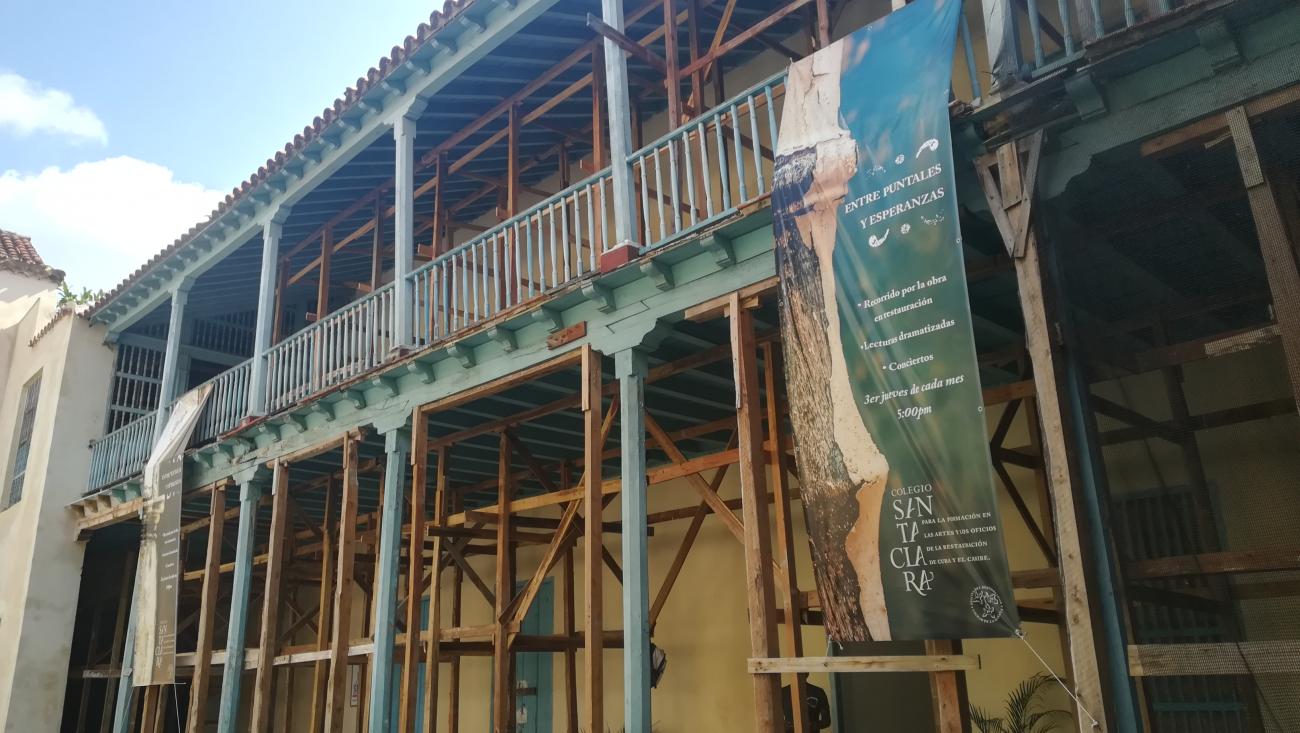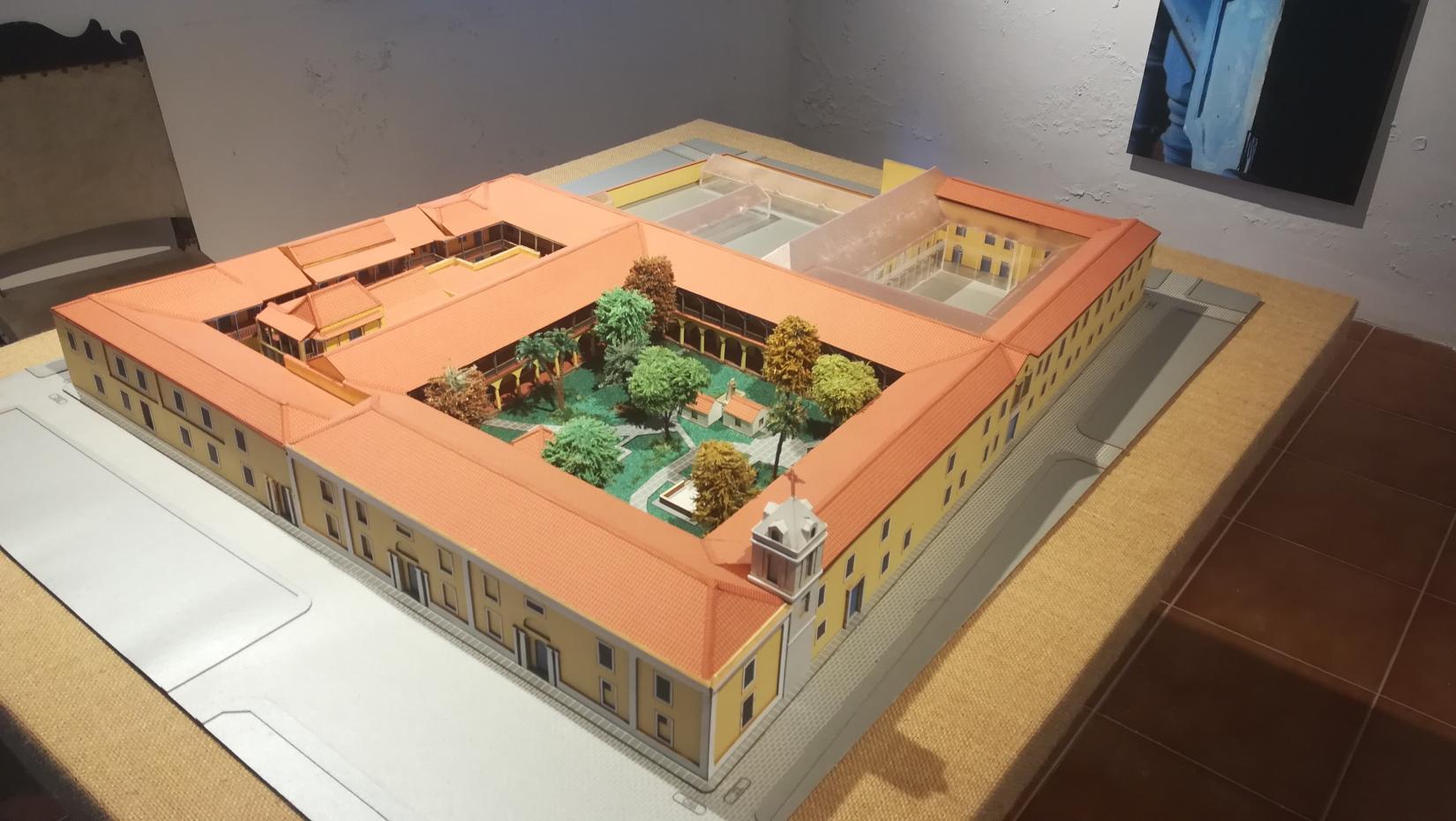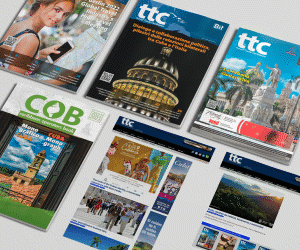The Transcultura Program: Integrating Cuba, the Caribbean and the European Union through Culture and Creativity, implemented by UNESCO and financed by the European Union, has facilitated the purchase of more than 250 tons of materials for the restoration of the Santa Clara Convent worth more than 1.7 million dollars until May 2022, according to information published on the agency’s website.
This figure has been reached, so far this year, after the delivery of supplies such as paints, mortars, materials for electrical installations and scaffolding systems and which are being implemented as the works progress.
The Transcultura Program supports the Office of the City of Havana Historian (OHCH) in carrying out these works, providing technical assistance and complementary financing for the purchase and import of materials necessary for the heritage rehabilitation of the building.
This effort is added to the cooperation of other organizations such as the Italian Agency for Development Cooperation, the Latin Institute of Italy or the World Monuments Fund.
Currently, the works are focused on repairing roofs and structures, for which wood and treatments are used, scaffolding to carry out the work with greater safety, special mortars for the wall heads where the ceilings rest, and paints to give protection to the already restored elements, among other materials provided by Transcultura.
Transcultura’s contribution is mainly for the recovery of the first cloister of the Convent, which will house the main lecture hall and a large part of the workshops and laboratories of the future Santa Clara College for Training in Restoration Arts and Crafts of Cuba and the Caribbean, and which is part of the Caribbean Center for Cultural Training promoted by Transcultura.
A training center for heritage restoration
Located in Old Havana, between Sol, Cuba, Habana and Luz streets, the Santa Clara de Asís Convent was inaugurated in 1644 and is the first of the three nuns’ buildings erected in the township of San Cristóbal de La Habana.
Capable of impacting, with its majestic simplicity, the most exquisite tastes and styles, it is currently one of the oldest colonial buildings in Cuba. After completing its restoration works, the building will become a training center that will make available to specialists and students from the Caribbean the experience in restoration matters accumulated, over decades, by the Office of the City of Havana Historian.
When young people begin to fill the classrooms of the old Santa Clara Convent, Eusebio Leal’s dream will multiply in new knowledge and new professionals, who will have the responsibility of transforming cities, buildings and heritage works. Thus, the legacy of Leal’s profound pedagogical vocation will be extended to the peoples of the Caribbean who also need to preserve their culture and heritage.
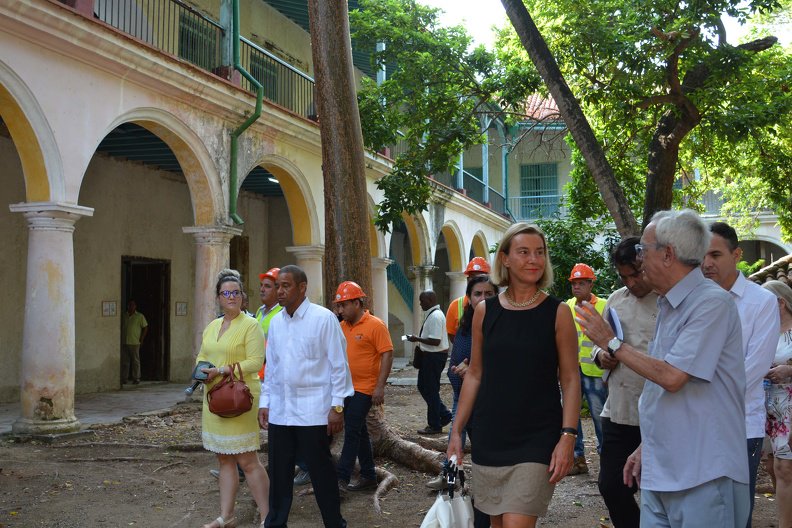
In 2019, Federica Mogherini, High Representative for Foreign Affairs and Security Policy of the European Union (EU) and Vice President of the European Commission, toured the old Santa Clara Convent with Eusebio Leal. Photo: Agencia Cubana de Noticias.
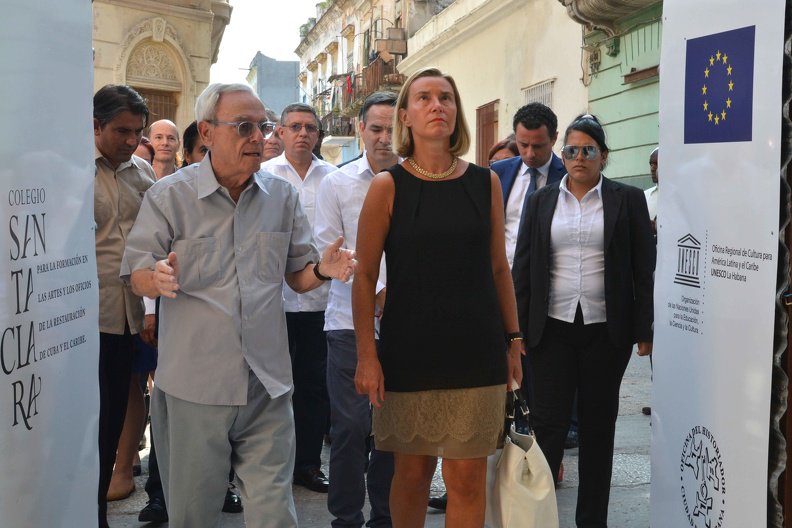
The then historian of Havana, Doctor Eusebio Leal Spengler, gave Mogherini a detailed explanation about the rehabilitation works of the monastery. Photo: Agencia Cubana de Noticias.
UNESCO Office in Havana: seven decades of work
The UNESCO Office in Havana was officially inaugurated in February 1950, but its genesis dates back to the 2nd Meeting of the General Conference of the Organization, held in Mexico in 1947, in whose Resolutions on Foreign Affairs the creation in the Cuban capital of a UNESCO Regional Office was decided. This decision was ratified at the 3rd General Conference of UNESCO, held in Beirut, in 1948, which established Havana as a Regional Center for the Western Hemisphere, which was officially inaugurated in 1950.
The Office performs multiple functions of great importance and impact on the continent, as a Regional Office for Culture in Latin America and the Caribbean, Cluster Office for the Latin Caribbean (Cuba, Dominican Republic and Haiti) and UNESCO Representation before the Governments of Cuba and the Dominican Republic.
For almost 70 years, the UNESCO Office in Havana has promoted programs and initiatives in the sphere of Culture for the 33 Member States and 7 Associate Members of the region, with a view to contributing to the preservation of the Tangible and Intangible Cultural Heritage, the promotion of creativity, the development of cultural industries, the promotion of pluralism and intercultural dialogue, the safeguarding of diversity and the encouragement of cultural integration processes.
The support and accompaniment provided to the Forum of Ministers of Culture and Persons in Charge of Cultural Policies of Latin America and the Caribbean since its creation in 1989 deserves special mention, as well as the coordination and financing of its main project, the “Portal de Cultura de América Latina y el Caribe” (http://www.lacult.unesco.org) since 2002. In this area, the edition of various materials should also be highlighted, including the periodic publications Oralidad y Cultura y Desarrollo.

MORE NEWS



